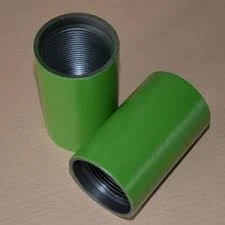- Afrikaans
- Albanian
- Amharic
- Arabic
- Armenian
- Azerbaijani
- Basque
- Belarusian
- Bengali
- Bosnian
- Bulgarian
- Catalan
- Cebuano
- Corsican
- Croatian
- Czech
- Danish
- Dutch
- English
- Esperanto
- Estonian
- Finnish
- French
- Frisian
- Galician
- Georgian
- German
- Greek
- Gujarati
- Haitian Creole
- hausa
- hawaiian
- Hebrew
- Hindi
- Miao
- Hungarian
- Icelandic
- igbo
- Indonesian
- irish
- Italian
- Japanese
- Javanese
- Kannada
- kazakh
- Khmer
- Rwandese
- Korean
- Kurdish
- Kyrgyz
- Lao
- Latin
- Latvian
- Lithuanian
- Luxembourgish
- Macedonian
- Malgashi
- Malay
- Malayalam
- Maltese
- Maori
- Marathi
- Mongolian
- Myanmar
- Nepali
- Norwegian
- Norwegian
- Occitan
- Pashto
- Persian
- Polish
- Portuguese
- Punjabi
- Romanian
- Russian
- Samoan
- Scottish Gaelic
- Serbian
- Sesotho
- Shona
- Sindhi
- Sinhala
- Slovak
- Slovenian
- Somali
- Spanish
- Sundanese
- Swahili
- Swedish
- Tagalog
- Tajik
- Tamil
- Tatar
- Telugu
- Thai
- Turkish
- Turkmen
- Ukrainian
- Urdu
- Uighur
- Uzbek
- Vietnamese
- Welsh
- Bantu
- Yiddish
- Yoruba
- Zulu
tubing pup joint
Understanding Tubing Pup Joints in Oil and Gas Operations
In the oil and gas industry, the efficient transportation of fluids is critical to successful operations. One of the essential components in the tubing system is the tubing pup joint. This relatively small yet crucial component plays a significant role in the overall efficiency of the drilling and production process. In this article, we will explore what tubing pup joints are, their purpose, types, and importance in the oil and gas sector.
What is a Tubing Pup Joint?
A tubing pup joint is a short length of piping that connects larger sections of tubing in an oil or gas well. Typically ranging from 2 to 10 feet in length, these joints are used to adjust the overall length of the tubing string to meet specific well requirements. They are essential for providing flexibility in the tubing system, allowing for modifications during drilling and production processes without necessitating the replacement of entire tubing string sections.
Purpose of Tubing Pup Joints
The primary purpose of tubing pup joints is to facilitate the assembly and disassembly of the tubing string during drilling, completion, and production operations
. They serve several functions1. Length Adjustment Tubing pup joints can be added or removed to achieve the precise length of tubing needed for well operations. This is particularly useful in directional drilling or in cases where downhole conditions change.
2. Compensation for Expansion As temperature and pressure change within the well, the tubing can expand or contract. Pup joints help accommodate these changes, reducing the risk of tubing failure due to stress.
3. Alternative Configurations Pup joints allow for the customization of tubing strings in terms of connections and arrangements, which can be crucial for optimizing production.
Types of Tubing Pup Joints
There are various types of tubing pup joints available, each designed for specific applications. The most common types include
tubing pup joint

1. Standard Pup Joint This is the most frequently used type, designed simply to extend the tubing string length.
2. Recessed Pup Joint This type includes a recessed area at one or both ends, which allows for a more secure connection. It is particularly useful in high-pressure applications.
3. Specialty Pup Joint These are customized joints designed for unique applications, such as those needed for specific downhole tools or conditions.
Importance in Oil and Gas Operations
The role of tubing pup joints in oil and gas operations cannot be overstated. They contribute to
1. Operational Efficiency By providing a means of adjusting tubing lengths and configurations, pup joints enable operators to adapt quickly to varying conditions, maintaining production efficiency.
2. Cost-Effectiveness The use of pup joints eliminates the need for replacing entire tubing sections, which reduces material costs and downtime during drilling and production.
3. Safety Properly configured tubing strings can significantly reduce the risk of well control incidents. Tubing pup joints help maintain pressure integrity and prevent failures that could lead to hazardous situations.
Conclusion
Tubing pup joints may be small components in the grand scheme of oil and gas operations, but their impact on the efficiency, safety, and cost-effectiveness of these processes is significant. Understanding their role and functionality is vital for engineers, operators, and technicians involved in the oil and gas industry. As the industry continues to innovate and optimize drilling and production techniques, components like tubing pup joints will remain integral to achieving operational success. By investing in quality pup joints and utilizing them effectively, companies can enhance their productivity while ensuring safe and reliable operations in the challenging environment of oil and gas extraction.
-
Tubing Pup Joints: Essential Components for Oil and Gas OperationsNewsJul.10,2025
-
Pup Joints: Essential Components for Reliable Drilling OperationsNewsJul.10,2025
-
Pipe Couplings: Connecting Your World EfficientlyNewsJul.10,2025
-
Mastering Oilfield Operations with Quality Tubing and CasingNewsJul.10,2025
-
High-Quality Casing Couplings for Every NeedNewsJul.10,2025
-
Boost Your Drilling Efficiency with Premium Crossover Tools & Seating NipplesNewsJul.10,2025







